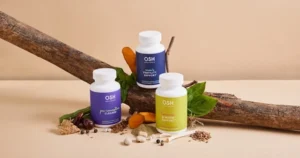
If you are planning to market animal health products, the question of pet supplements or veterinary health products will come up fast. This difference matters, especially if you’re selling in both the United States and Canada.
What qualifies as a supplement in the U.S. might be considered a drug or a Veterinary Health Product (VHP) in Canada. Misunderstanding this can lead to product seizures, warning letters, or even a ban from entering the market.
In this blog, we will walk you through how both countries regulate these products, why it matters for your business, and how to stay compliant across borders. Keep reading to discover the key distinctions and what they mean for your regulatory obligations.
What are pet supplements in the U.S.?
In the U.S., pet supplements aren’t officially recognized by the FDA. Instead, they fall under regulations for animal foods or drugs. If your product contains only approved feed ingredients and avoids therapeutic claims, it may be considered food. But if it claims to treat or prevent disease, it’s likely a drug.
Claims like “supports mobility” may be tolerated, while “relieves joint pain” could require drug approval. You must also meet FDA manufacturing standards and, in many cases, register at the state level with AAFCO. Learn more at the FDA’s Animal & Veterinary Products page.
What are veterinary health products in Canada?
Canada classifies pet supplements as Veterinary Health Products (VHPs), which are low-risk products used to maintain or promote animal health, not treat disease.
To sell a VHP, you must notify Health Canada and use only permitted ingredients. Claims must be non-therapeutic, and your label must match your submission. Bilingual packaging is required.
This process is more flexible than a drug application but still demands accuracy. For more information, visit Health Canada’s VHP page.
Comparing U.S. and Canadian regulations
To help you spot the key differences faster, here’s a side-by-side look at how each system defines and regulates these products:
| Aspect | United States | Canada |
| Regulatory Category | Animal food or animal drug | Veterinary Health Product (VHP) |
| Recognized Term | No official recognition of “pet supplements” | “Pet supplements” not used; products are VHPs |
| Governing Body | FDA + state-level (AAFCO involvement) | Health Canada |
| Ingredient Approval | Based on AAFCO listings or approved drug ingredients | Must use substances from the VHP permitted substances list |
| Claim Restrictions | Cannot make disease claims without drug approval | Must avoid disease-related claims |
| Pre-Market Requirement | No federal registration, but state registration may apply | VHP Notification required before sale |
| Packaging Requirements | Varies by state | Bilingual packaging required (English and French) |
| Enforcement Risk | Product seizure or warning letters | Border detention or withdrawal from market |
Common mistakes to avoid
Many companies overlook the fine print that separates a compliant product from one that might be stopped at customs or pulled from shelves. So, here are some of the most common mistakes to watch out for:
1. Assuming U.S. rules apply in Canada
Some companies try to bring “supplements” into Canada without realizing that these are classified differently. In Canada, the word “supplement” is not typically used for animals. It is either a drug or a VHP.
2. Making unapproved claims
Whether you are in the U.S. or Canada, therapeutic claims (like “cures skin infections”) can quickly move your product into the drug category, which has stricter requirements.
3. Skipping notification in Canada
If you do not notify Health Canada before selling your product, it can be detained at the border or removed from store shelves.
4. Using non-compliant ingredients
Canada has a strict list of permitted substances. Using an unapproved ingredient can delay your product launch or lead to immediate enforcement.
5. Neglecting state registrations in the U.S.
Some companies overlook that even if their product meets federal guidelines, they still need to register in individual states, each with its own process and fees.
How to stay compliant
As you’ve seen, each country has its own approach. Here’s how to stay aligned:
For the United States:
- Check AAFCO ingredient approval and avoid therapeutic claims.
- Review FDA guidance on marketing language.
- Register with individual states where needed.
For Canada:
- Submit a VHP notification to Health Canada.
- Use only permitted ingredients and non-therapeutic claims.
- Ensure bilingual packaging and label consistency.
Frequently asked questions
Can I sell the same pet product in both countries?
Not as-is. A product that is legal in the U.S. might need reformulation, new packaging, or a claim adjustment to comply with Canadian VHP rules. Even the terminology and suggested usage may need to change.
Do I need different product names or branding?
Not always, but you may need different versions of the label and accompanying literature to match local compliance requirements.
Can one regulatory plan cover both markets?
No. While there are overlaps in good manufacturing practices and safety expectations, each country has distinct pathways.
Will product claims need to change?
Yes. What is considered a functional benefit in the U.S. might be interpreted as a therapeutic claim in Canada. Avoid crossover language that triggers higher scrutiny.
What is the benefit of entering both markets?
By aligning with regulations in both the U.S. and Canada, your brand can access two of the largest pet-owning populations in North America. Cross-border compliance adds credibility and can give your brand a competitive edge.
Compliance is your competitive edge
Navigating pet product regulations across borders takes more than good intentions. It requires precision, up-to-date knowledge, and a clear strategy tailored to each market.
Whether you’re launching a new product or adapting an existing one, our team can help you stay compliant, save time, and avoid costly setbacks. We monitor updates from both the FDA and Health Canada,so you don’t have to.
Need help getting started? Contact us today to ensure your products meet regulatory standards in the U.S. and Canada.








